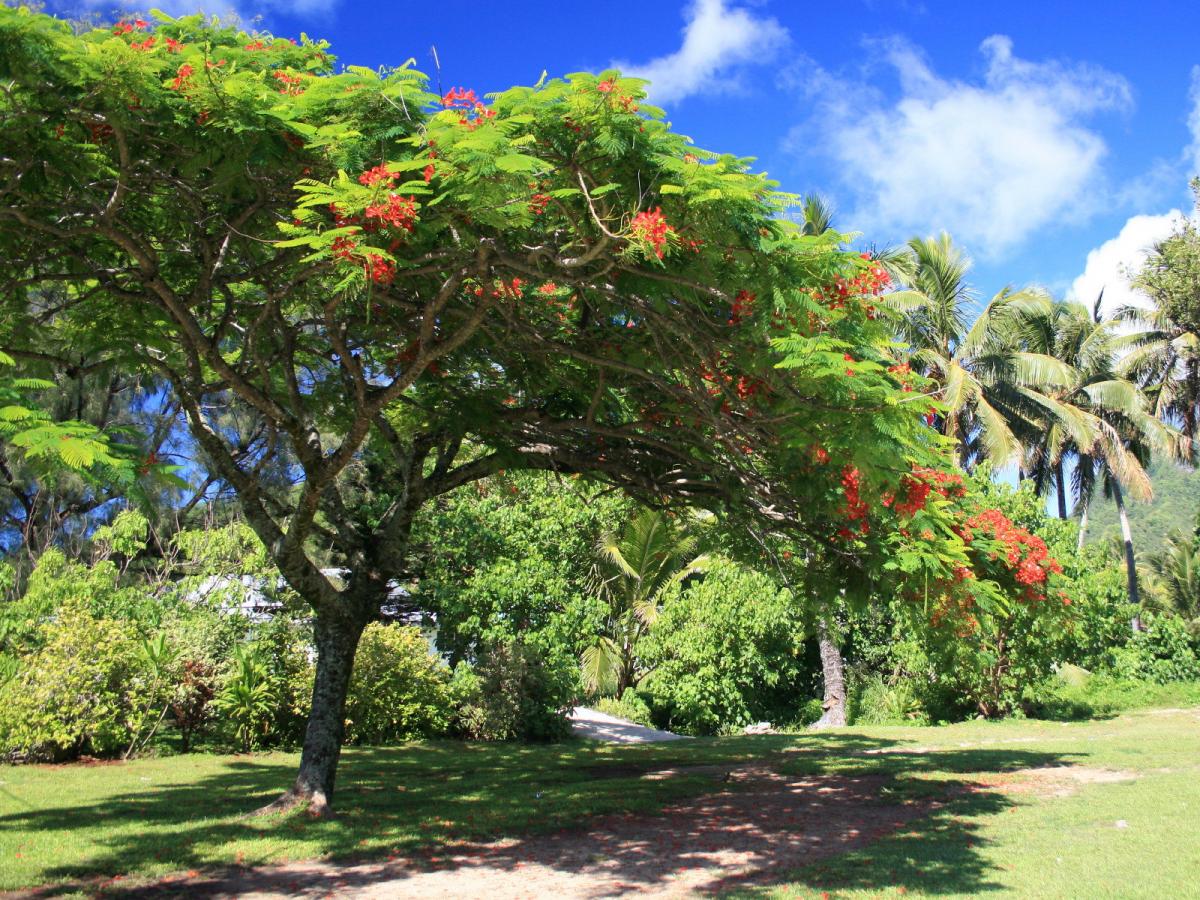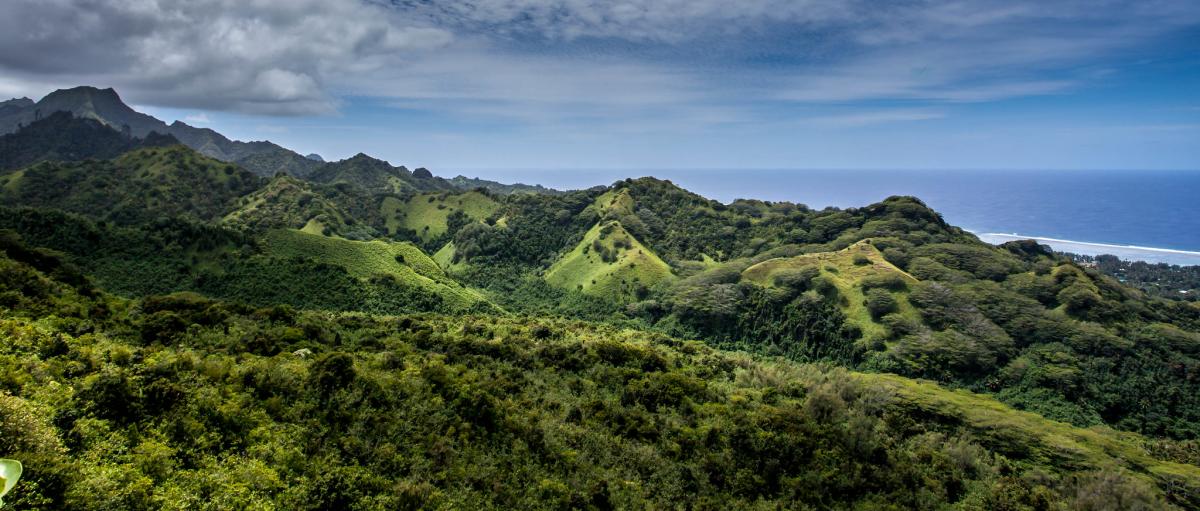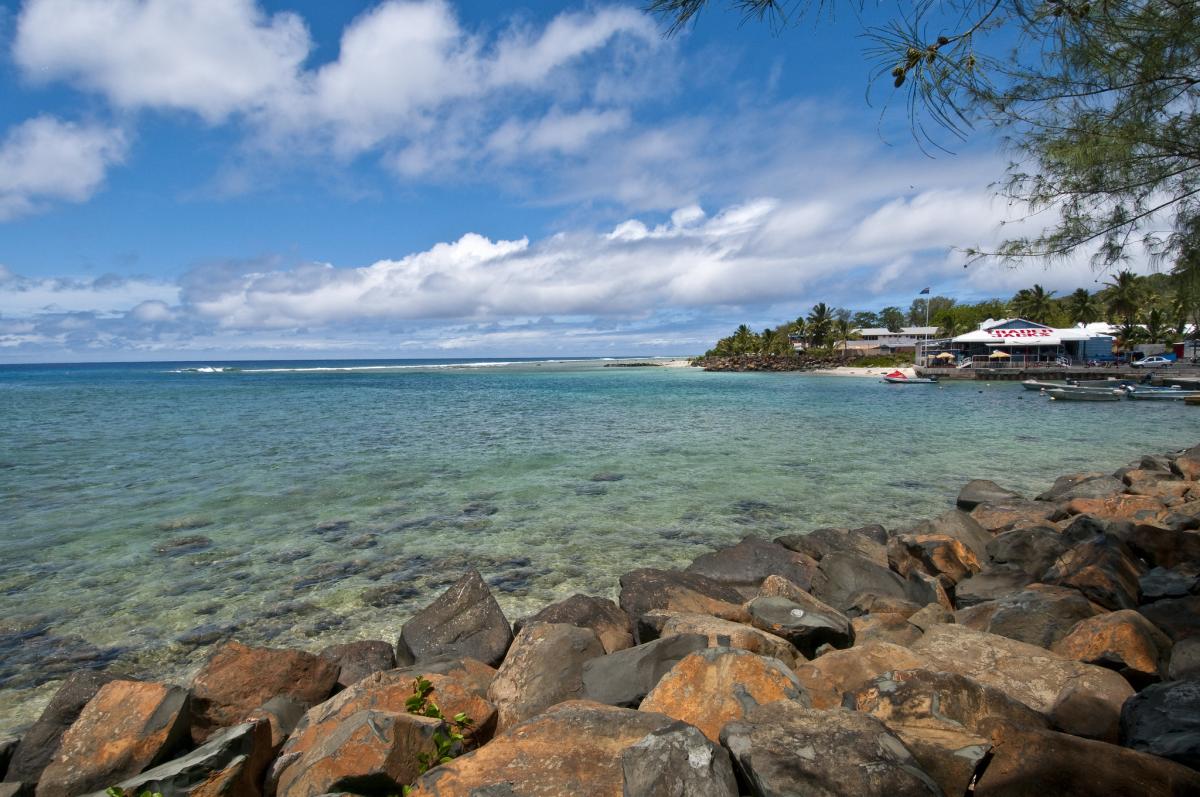E51SGC will be active from Rarotonga, South Cook Islands, IOTA OC - 013, 6 - 24 November 2024.
Team - LZ1GC, LZ5QZ.
Recent DX Spots E51SGC
E51SGC Log search They will operate on 160 - 6m, CW, SSB, FT4, FT8, RTTY.
QSL via LZ1GC, ClubLog OQRS, LOTW.
DXCC Country - South Cook Islands, E5/S.
Rarotonga Island: unravelling the mystery
When referring to the Cook Islands, the largest of the archipelago's volcanic islands, named Rarotonga, is mostly in mind. It is known from history that this part of the archipelago was considered a kingdom, and now there is the Cook Islands Parliament and other important elements of infrastructure.
If you want to visit this island, it is worth learning a little more about it.
 Rarotonga, South Cook Islands. Authors - Sam and Jo..
Rarotonga, South Cook Islands. Authors - Sam and Jo..
What does the geography say?
Rarotonga Island is of volcanic origin and is considered a massif. It has a total land area of 67.19 square kilometres. On its territory is located the capital and at the same time the largest city of the Cook Islands - Avarua (translated as ‘two harbours’, which of course there are not a couple).
The landscape is quite varied:
- Picturesque waterfront;
- A mountainous and rugged centre.
Besides being surrounded by the Pacific Ocean, the volcanic origin of the island ensures that there are plenty of fresh water sources. The local population draws good quality water from springs and small natural streams that run in the valleys. Large groundwater reservoirs have also been found.
Flora and Fauna
The plant world of Rarotonga Island is practically no different from other massifs of the Pacific Ocean. It is worth saying that the vegetation is somewhat diverse in the southern part - this is due to the peculiarities of the structure of the massif and volcanic origin. In general, the flora can be divided into several zones:
- Makatea;
- Coastal zone vegetation;
- Swamp group;
- Ferns;
- Vegetation of the forest area.
The entire island is considered a protected area. Most of the sites have remained virtually untouched, resulting in the preservation of authentic land mammals. As for the fauna itself, it is also typical of all the Cook Islands.
 Rarotonga, Cook Islands. Author - Matthews Kurt.
Rarotonga, Cook Islands. Author - Matthews Kurt.
What to do for fun?
The island is mainly visited for a relaxing beach holiday on the narrow azure beaches, which are surrounded by dense palm trees. You can also do the following activities for a change:
Explore the numerous natural gorges that will keep you cool;
Take advantage of the services of guides who will plunge you into the history of the archipelago and the people of Polynesia, as well as show you around the area;
Indulge in spa treatments in one of the many hotels or salons;
Scuba diving to explore the seabed, which still holds many secrets.
And anglers will definitely be interested in underwater fishing. Your possible prey will be tuna, barracuda or marlin of rather large sizes. By the way, fish is a special diet of the locals and they treat their guests with it in the colourful restaurants of the town.
Also the island of Rarotonga can please tourists who like to give themselves to night entertainment. Bars, restaurants and entertainment centres in the hotels themselves can offer a variety of programmes that will not only occupy the time of rest, but also introduce you to the customs of the natives.
In the afternoon and with the whole family (or company) you can go to the national park, where you will be shown all the historical and folk sites that carry the history of this island. At the same time, you can explore the area in detail and in all its colours and appreciate the natural unspoilt beauty. Holidays in the park also include sports activities, and there are many playgrounds for children and adults.
There are only a couple of historical sites on this island that may be of interest to tourists - the first Christian church and the Papeyha Stone. Also worth seeing is the geometrically perfect circle of palm trees, which formed this figure naturally without human intervention. For tourists: be sure to ask your guide about the legends associated with the above attractions.
 Rarotonga, Cook Islands. Author - John Dale.
Rarotonga, Cook Islands. Author - John Dale.
For those who like to eat good food
There are many restaurants on the territory that offer visitors exclusively European cuisine. This is based on locally caught or grown produce, with some delicacies and alcohol brought in.
If you want to try something exotic, you can find a couple of places that specialise in local cuisine. Rice, local fruits, fish and meat form the basis for the dishes. Many dishes will appeal to vegetarians and seafood lovers. As for vegetables, they are mainly aubergines, zucchini, cabbage.
Be sure to try the national maturori - it is sea cucumber combined with green bananas. This dish is especially spicy and positively characterises the gastronomic tastes of the natives.
You can drink your treats with the wine you brought with you, or you can risk trying the local beer or as they call it tutunu. Especially this alcoholic drink is combined with another national dish, which is cooked in an earth oven and is called umukai. The delicacy is based on local vegetables (the set may vary) stewed with seafood (also depending on preference or availability).
You should definitely try the salted fish in sea water. It can be served on its own with the same local beer or as an ingredient in another recipe.
Some tips
If you decide to visit this island, you should go here between June and February. Although the climatic conditions here are mostly stable.
There is an airport on the territory of Rarotonga Island, which serves mainly only local airlines. The most frequent air service is with New Zealand Airlines. There is also air service to Los Angeles.
When entering the archipelago, visas are not required, but this applies only to tourists. If you want to extend your stay on the island, you need to contact the local Ministry of Migration. It is also worth finding out in advance about the restrictions that apply to the transport of certain products through customs.

